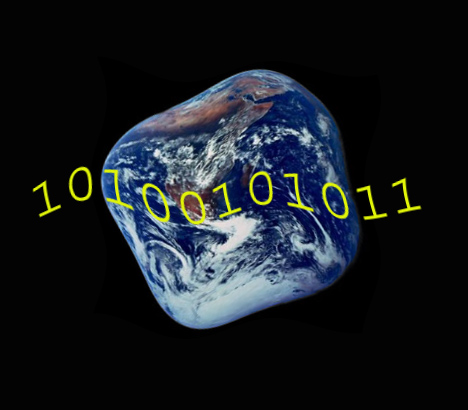A magazine where the digital world meets the real world.
On the web
- Home
- Browse by date
- Browse by topic
- Enter the maze
- Follow our blog
- Follow us on Twitter
- Resources for teachers
- Subscribe
In print
What is cs4fn?
- About us
- Contact us
- Partners
- Privacy and cookies
- Copyright and contributions
- Links to other fun sites
- Complete our questionnaire, give us feedback
Search:
Calculating the 'day after tomorrow'

A planet sized problem calls for a planet sized computer. Climate change is arguably one of the biggest issues around, and has been the topic for movie blockbusters like 'The day after tomorrow'. While the politicians discuss and we do our bit in energy saving, computer scientists are helping too.
The challenge of Climate change
Trying to understand how climate change will affect the world is a tough problem, there are so many different things to consider: the geology, the atmosphere, industry, tides, plants, you name it, and they all interact with each other. To try and appreciate how these factors act together scientists have to build complex mathematical models of how climate change could affect the world.
A BIG Problem
The problem is that this climate model of the world needs a lot of computer power to work out the answer, and there are multiple answers, each depending on what we put into the equations. It's a bit like weather forecasting, but because you are looking so far into the future, small differences in the assumptions you make in the model lead to big differences in the predictions. To get a more accurate prediction than any one forecast you run lots and lots of different models and look for the similarities that emerge. So the idea is that rather than build one big computer to do this (it would be enormous and expensive) we break the problem down into small bits and use lots of computers, people's home computers in fact, working together. If you download the software your computer will use its 'free time' to run the calculations when your screen saver pops up, and send the results to be joined with results from thousands of other computers to try and find the answer. You can download the climate change screen saver from the BBC and become a part of the world largest computer, helping humanity.
GRID to the rescue

This distributed use of hundreds or thousands of home computers networked together, called GRID computing, is also used to harness computers the world over to try and locate aliens in space at SETI@home or to run biological models to try and find ways to combat HIV FightAIDS@home. It just goes to show that even when trying to solve humanity's biggest problems, every little helps.
Predict the future
Computer Science is about changing the future. You are the ones who will make it happen.


